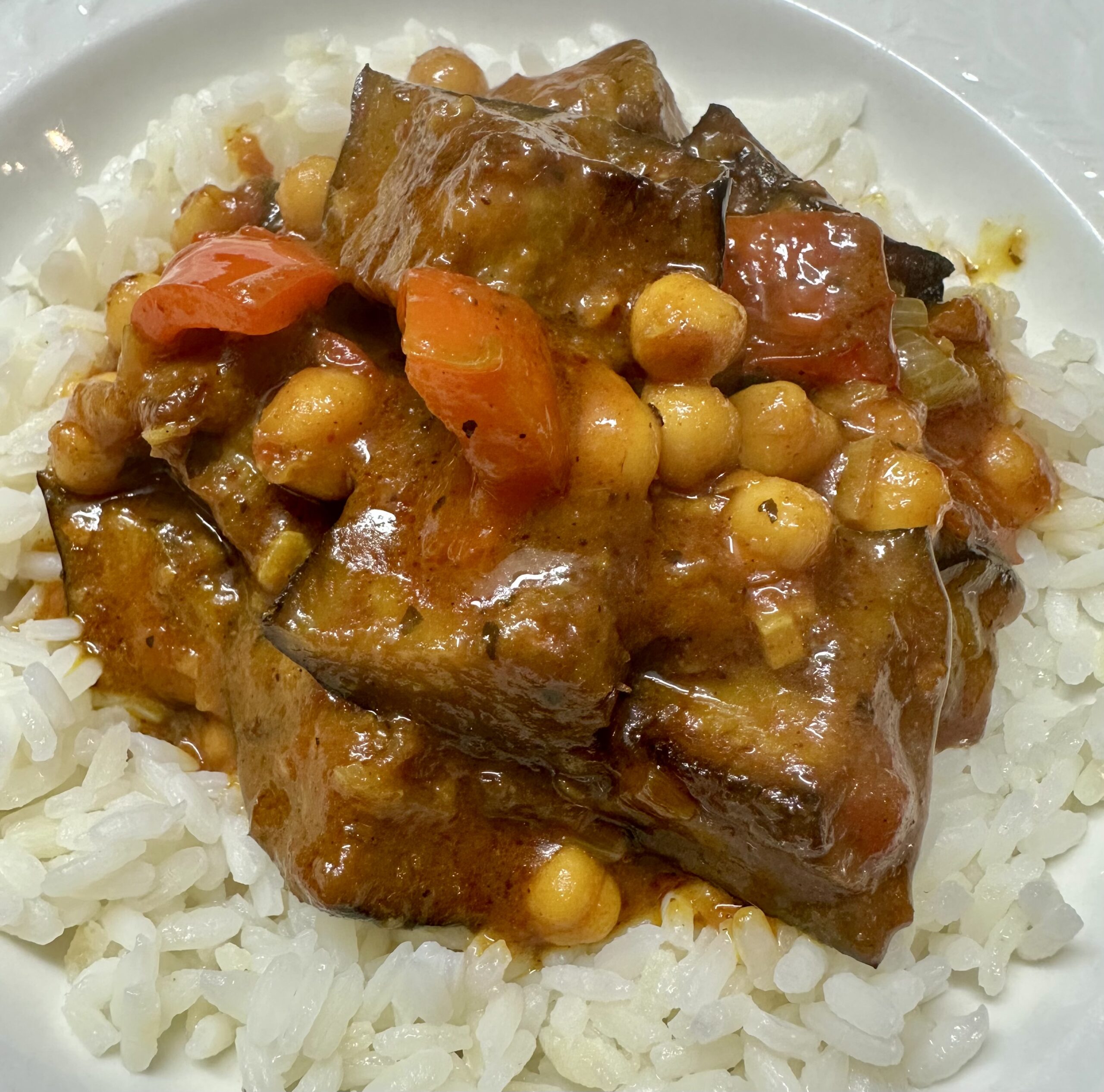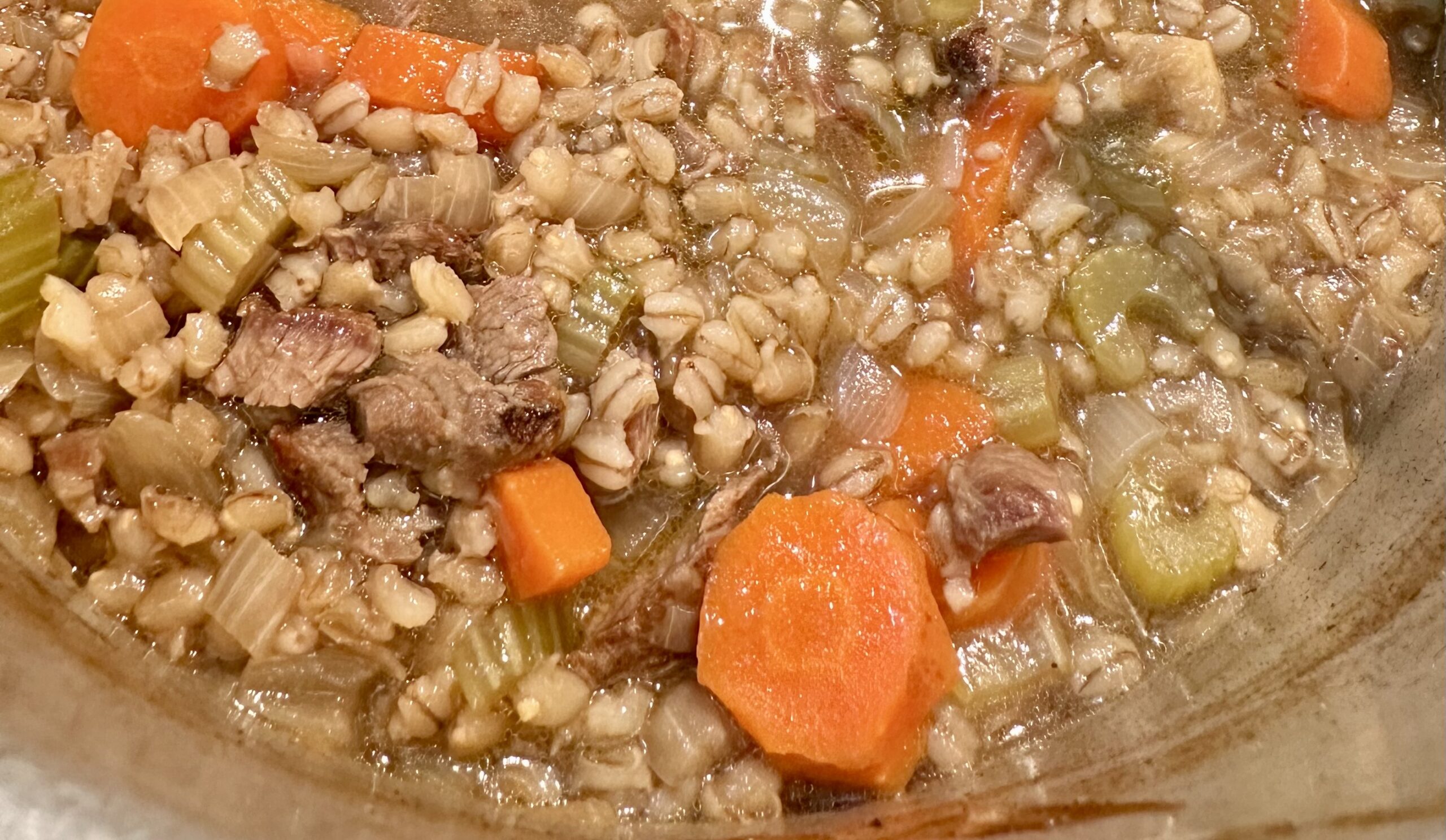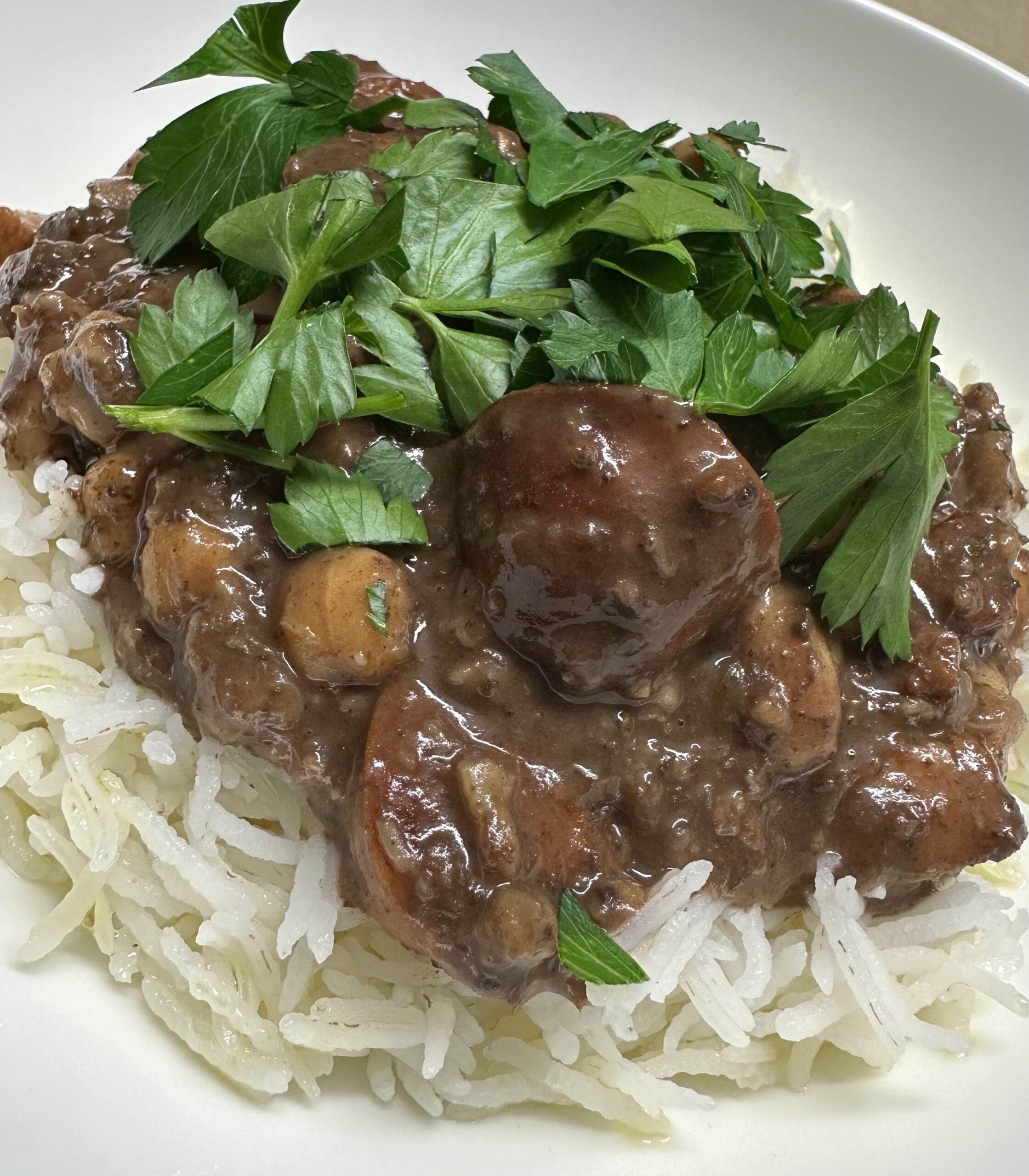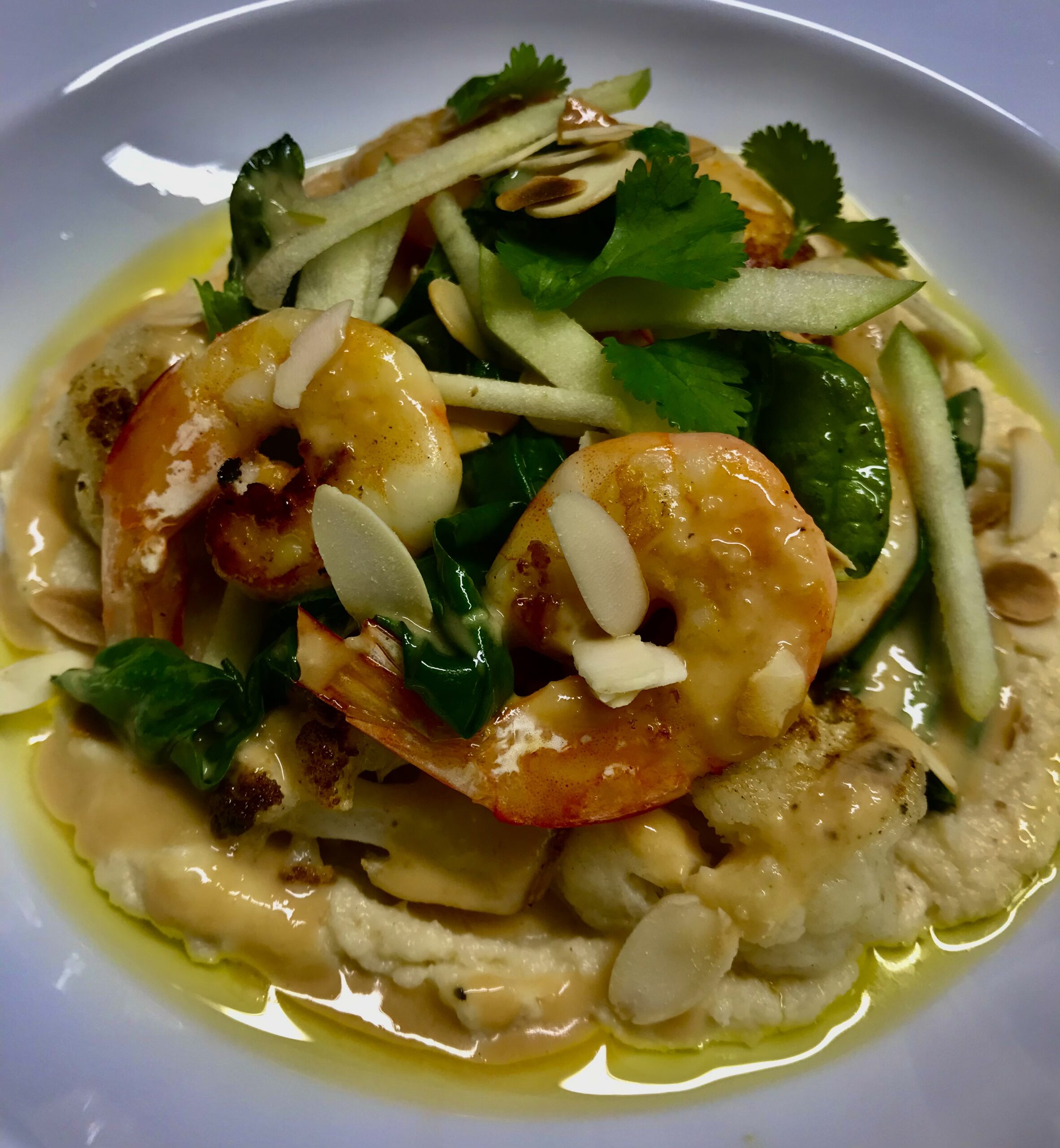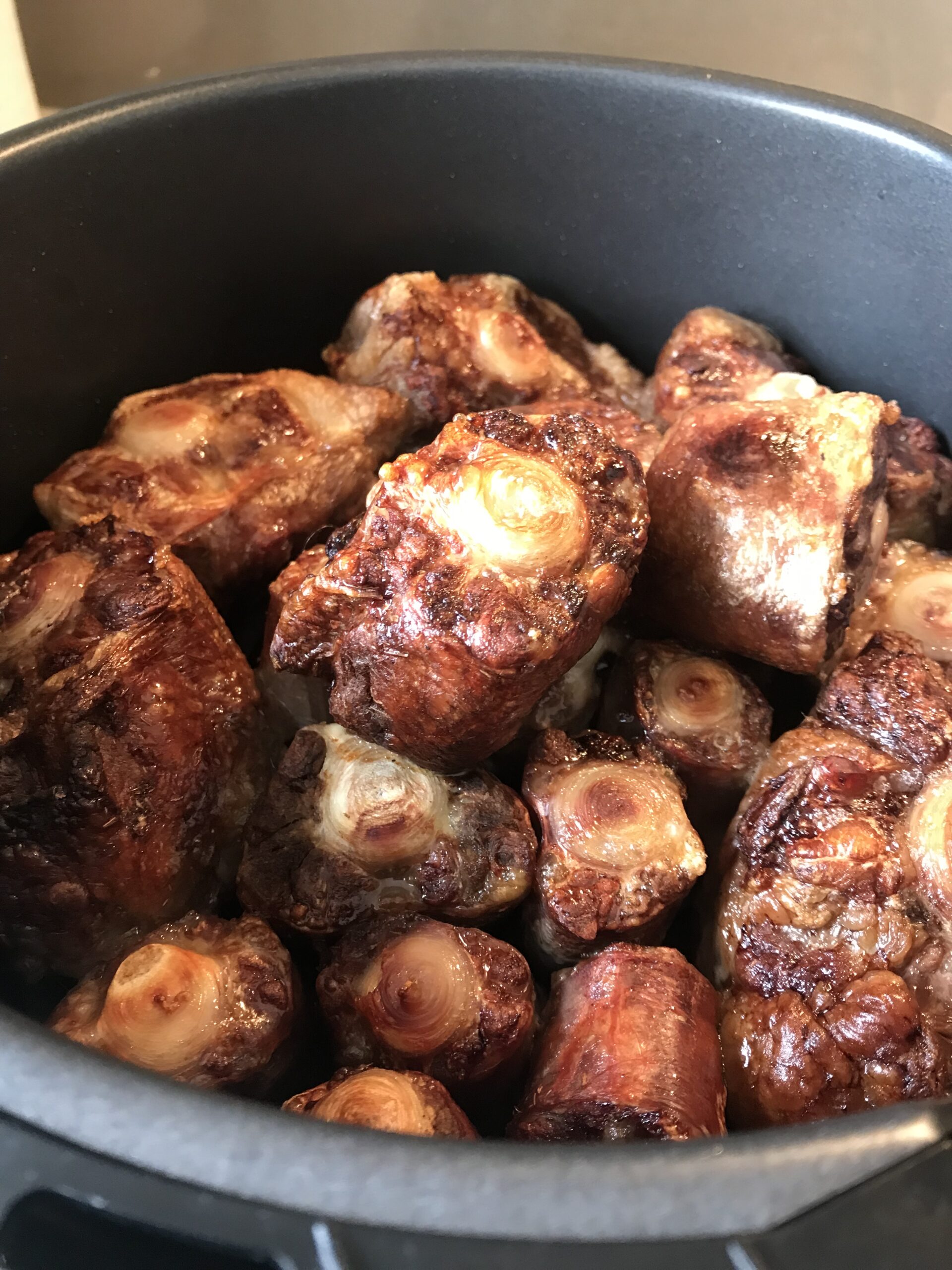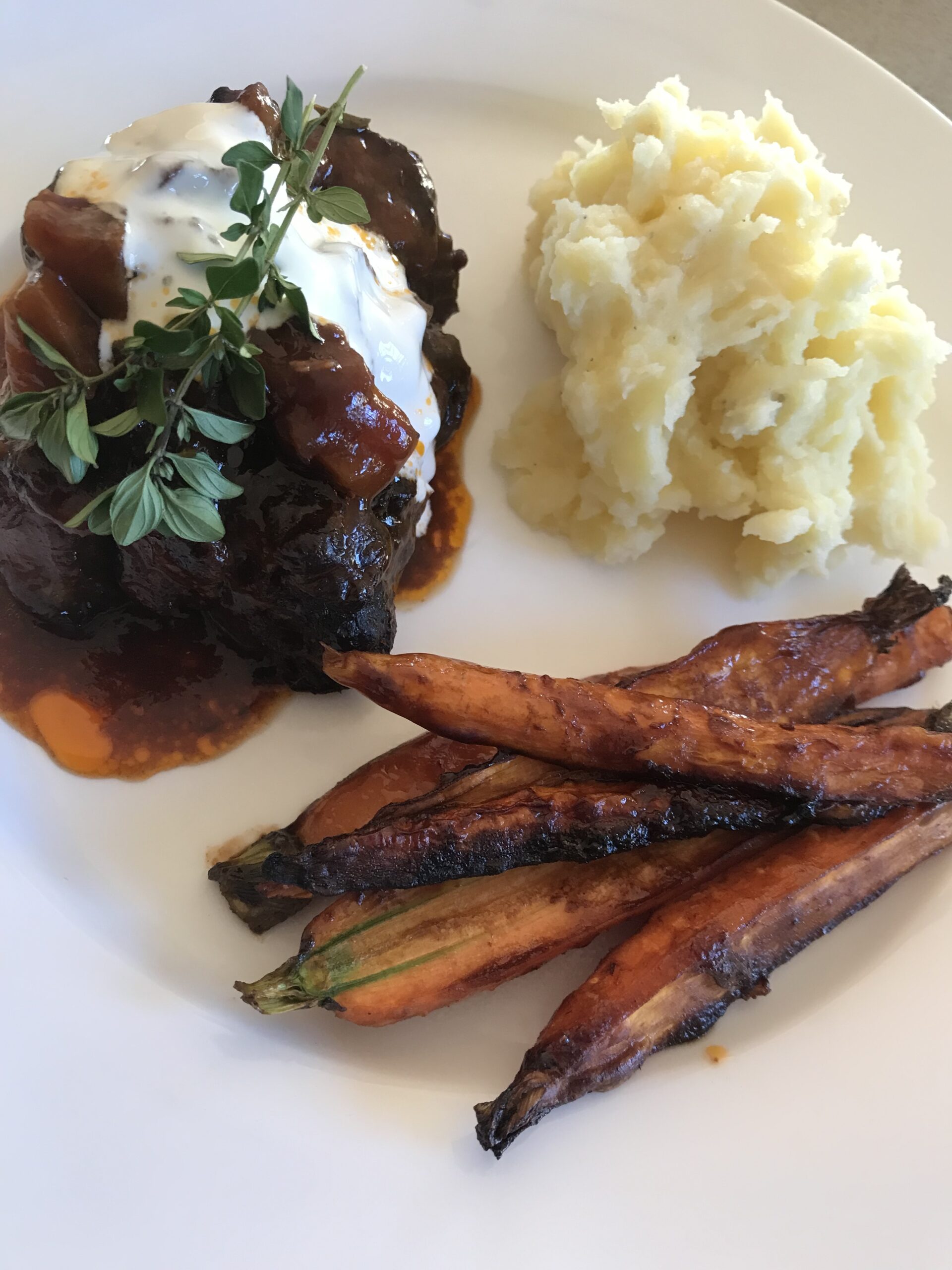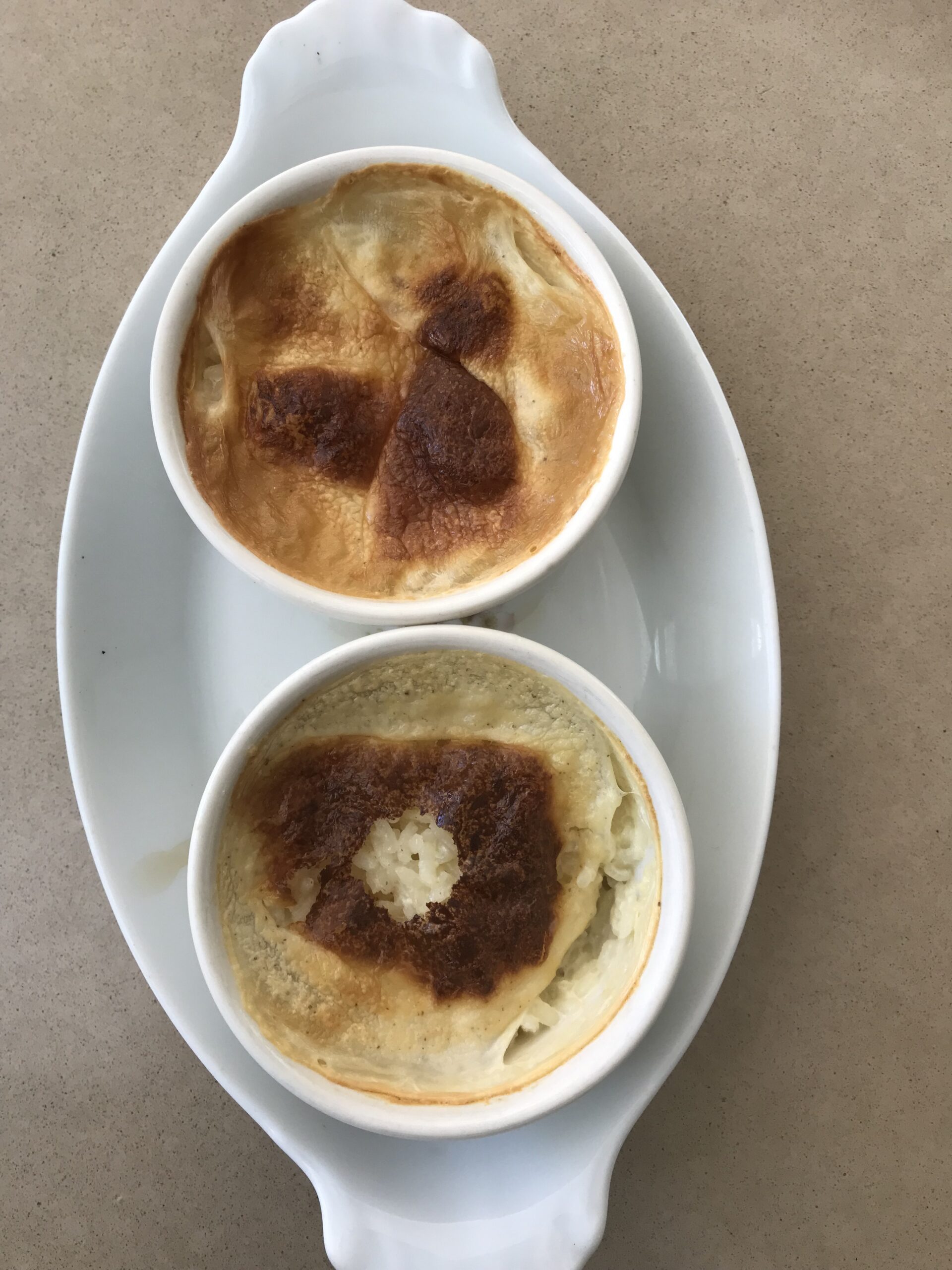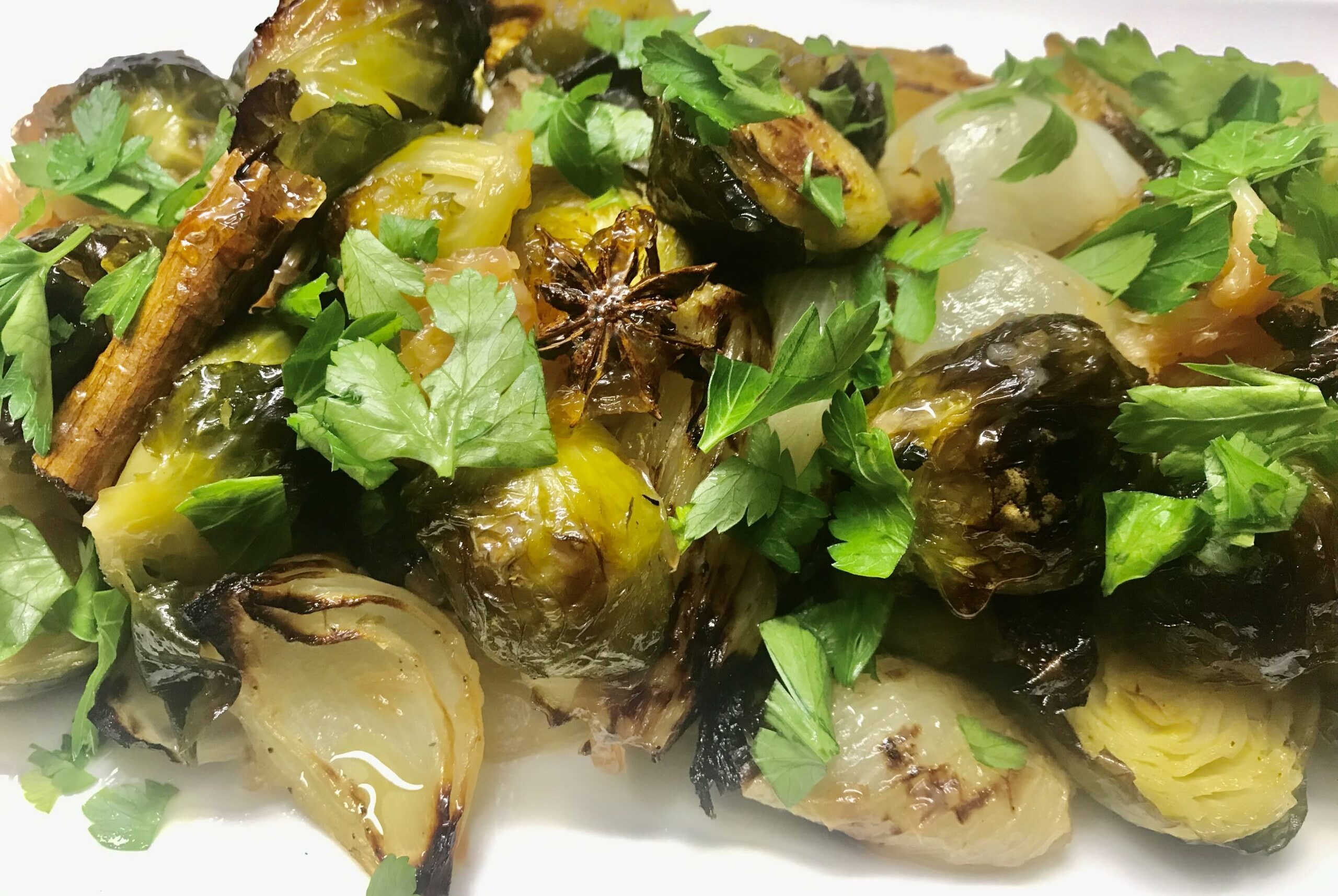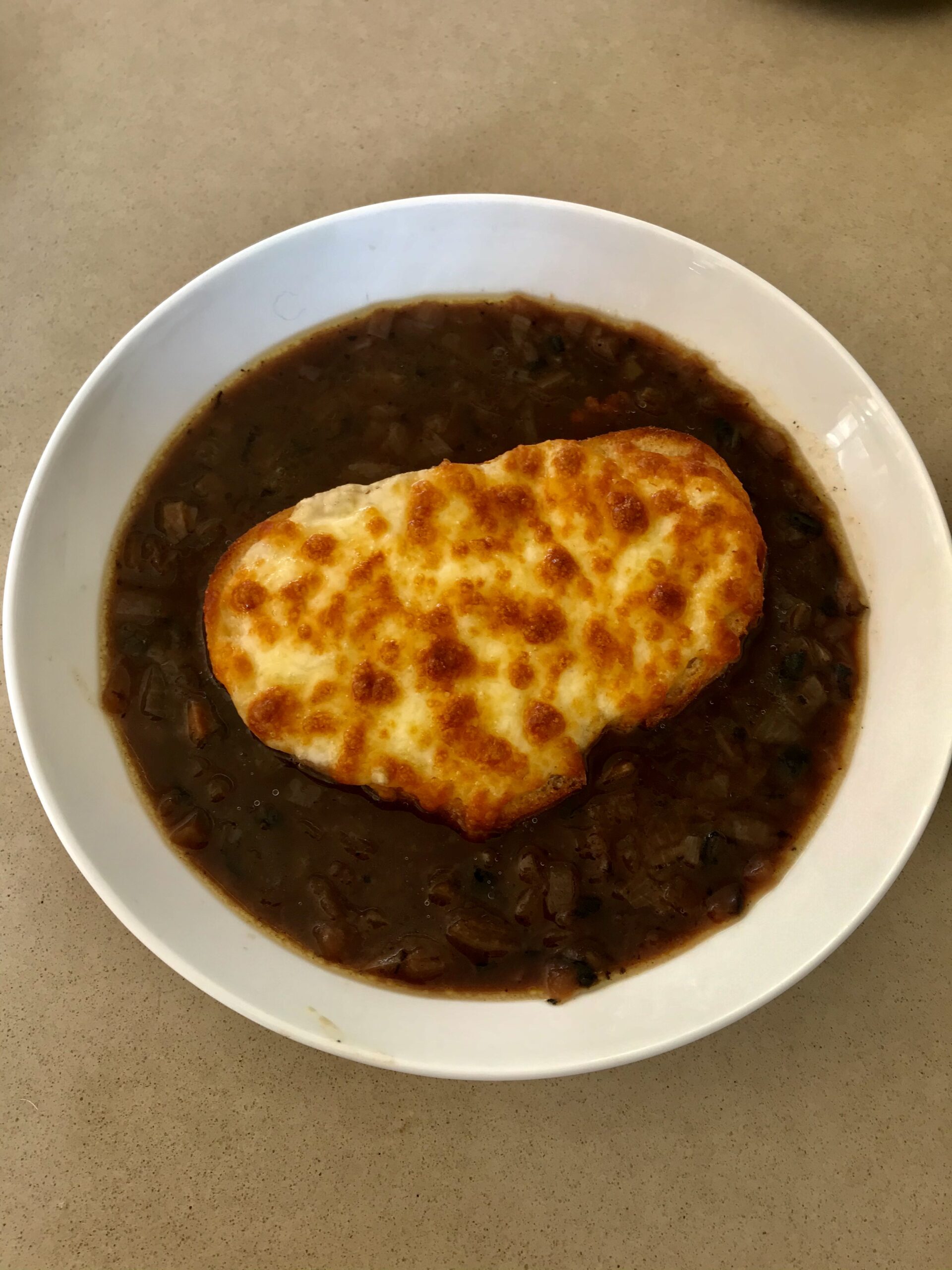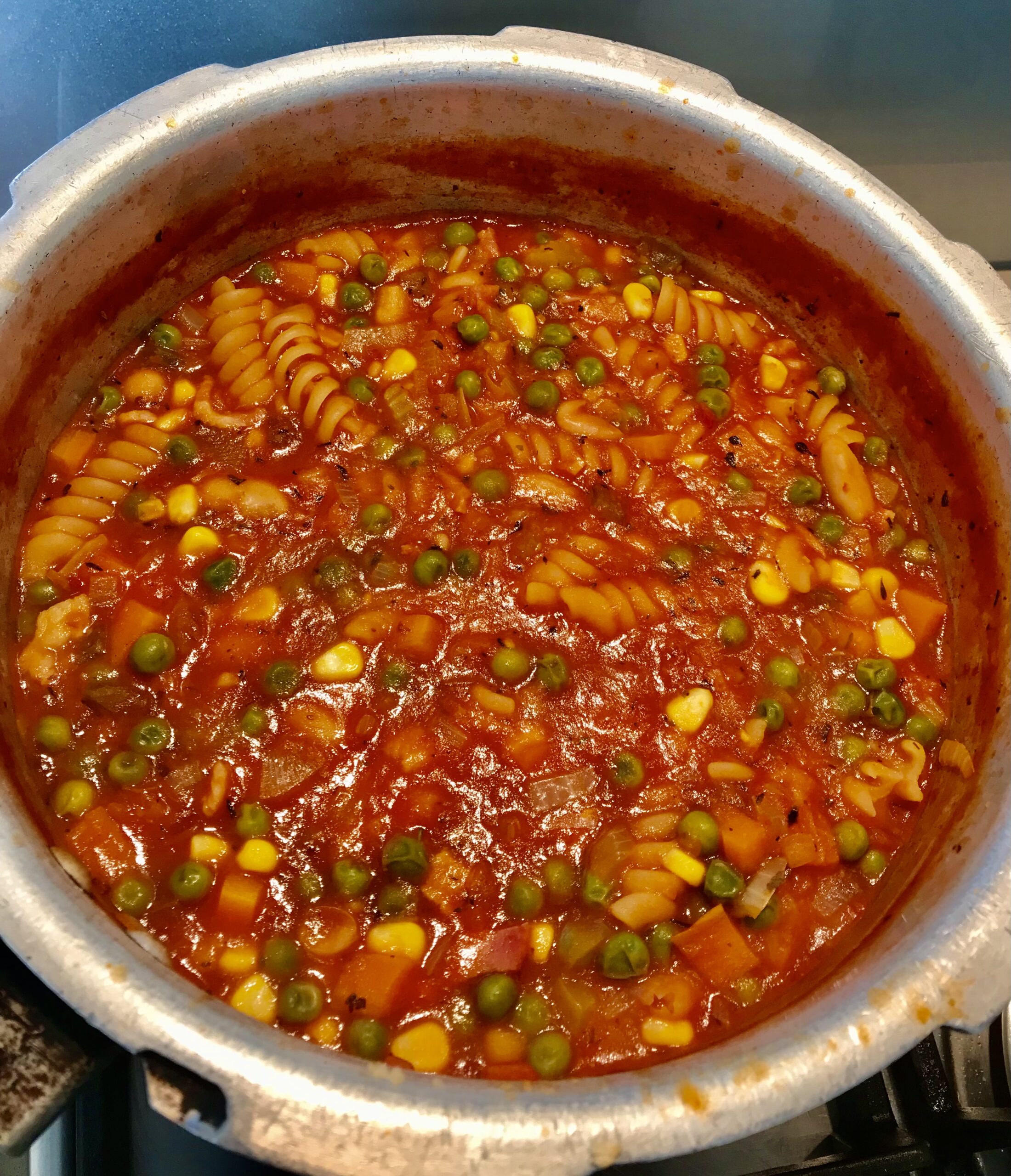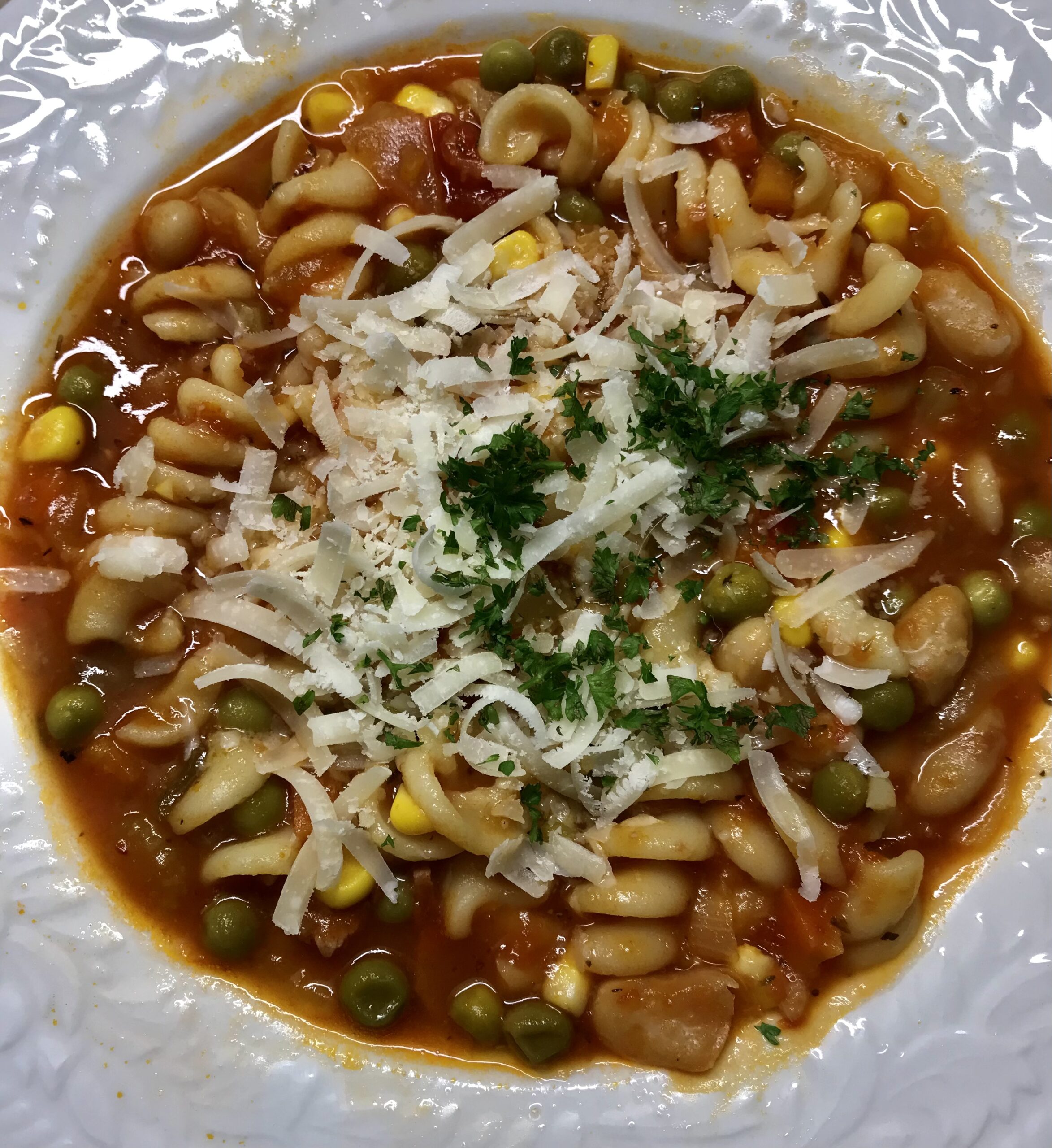My friend Katie said she made beef bourguignon the other day and had to throw it out because the meat was still tough despite hours of cooking.
I said I would give her my recipe which I’ve been making for years. I always make it in my slow cooker, but you can cook it in the oven if you prefer.
As you can see from the photo, this is not fancy food. Full of flavour, beef bourguignon makes perfect comfort food for mid-winter dining, especially with the cold snap we’re currently experiencing in Canberra.
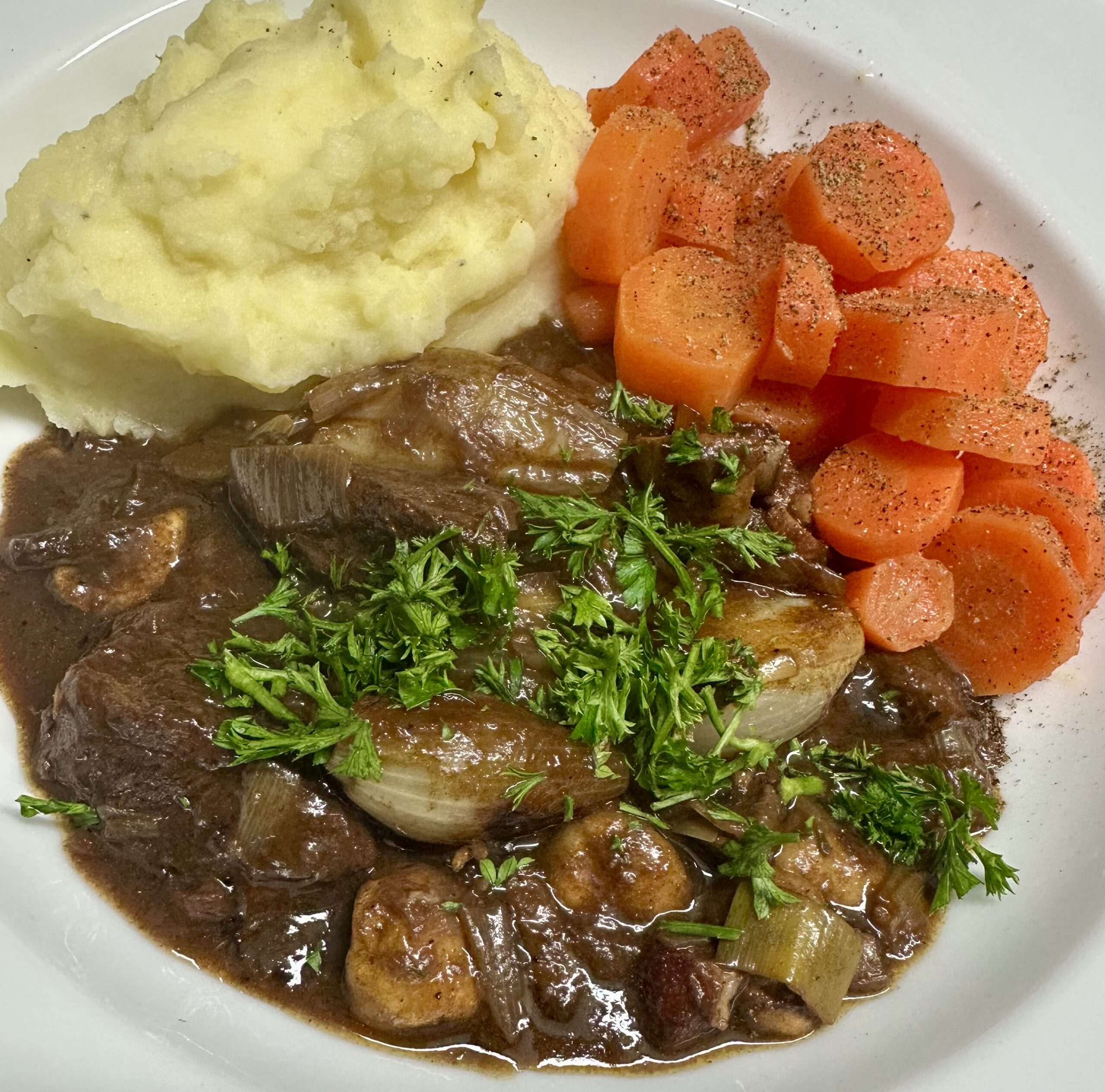
1kg to 1.5kg lean beef cut into 2-3cm cubes (I use chuck steak)
3 Tbs flour, seasoned
2 Tbs olive oil
50g butter
100g speck cut into thick slices then chunky little pieces
1 onion, chopped
1 clove garlic, crushed
1 leek sliced
S and P
3 Tbs brandy
bouquet garni or equivalent mix of herbs (see note below)
1 cup red wine
1 Tbs tomato paste
1-2 cups beef stock
Garnish:
12-16 shallots or very small onions, peeled, left whole
12-16 button mushrooms, wiped and trimmed
30g butter, extra
½ tsp sugar
3 tsp lemon juice
2 Tbs chopped parsley
To serve:
Steamed carrots and mashed potatoes
When cutting up the meat it’s ok to leave a bit of fat and tendons as these will cook down in the casserole. Just remove any excess.
Coat meat in seasoned flour, shaking off excess. Cook bacon in a large frying pan without any added oil until browned then place in a large ovenproof casserole or the bowl of a Slow Cooker, leaving the oil in the pan. Add half the olive oil and half the butter to the frying pan and brown the meat in two batches. When the second batch is brown, add the brandy, set alight (turn off the extractor fan first) and when the flames subside add to the casserole with the meat and juices from the frying pan.
Add remaining oil and butter to frying pan and cook, garlic, onion and leek for a few minutes, stirring until softened. Add to casserole with remaining ingredients, using just enough stock to almost cover. You will need less stock if you are using a Slow Cooker rather than the oven, so add a cup now and you can add more later if necessary. In my Slow Cooker I only need 1 cup of stock and don’t need to add more.
Cover and bake in the oven at 150°C for 1.5 to 2 hours or until meat is tender, adding more beef stock if necessary when you check it after an hour or so. It will take longer in a Slow Cooker and time will depend on how tender the meat is and whether you put the cooker on Low or High. In my Slow Cooker it takes 4 hours on High.
Garnish: heat extra butter in a small frying pan and cook the onions gently until soft and browned. Add sugar and continue cooking, stirring frequently, until glazed. Add mushrooms (halved or quartered if large) and continue to cook for a few mins, stirring, then add lemon juice. Just before serving mix onions and mushrooms into casserole. Meanwhile steam the carrots, sliced if large or whole if small. When tender drain and add a knob of butter, S and P. Cook the potatoes and mash with butter and a little milk.
Adjust seasoning in the casserole and remove bouquet garni. Serve the casserole with the carrots and the creamy mashed potatoes on the side. Sprinkle chopped parsley over the beef.
Serves 8
Note: a bouquet garni is a bunch of fresh herbs tied with a piece of string and removed from the dish just before serving. Usually it consists of bay leaves, thyme and parsley. Instead you can add some chopped fresh herbs or dried herbs.
